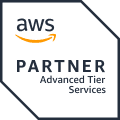In the fast-moving business environment of today, mastery of AWS FinOps is a core concern for cloud engineers, finance professionals, IT managers, and business leaders dealing with operational efficiency, cost control, and how to use key tools for better AWS cost management. In this post, we will talk about important AWS FinOps tools and best practices that help you derive the best possible financial operations.
Introduction to AWS FinOps
Complex AWS cloud environments, many a time, are hard to navigate, more so when one is dealing with the task of AWS cost management. AWS FinOps is a strategic way to merge financial management and cloud operations. This post walks you through AWS FinOps and discusses key tools that enhance cost management controls, along with actionable insights for implementation.
Understanding the Basics of AWS FinOps
What is AWS FinOps?
AWS FinOps involves the practice of financial management and cloud operations in a manner that enables organizations to maximize their cloud investment ROI. Much the same as DevOps, which enables efficient software delivery, FinOps is concerned with the optimization of cloud cost management through the collaboration of engineering, finance, and business teams.
Why Cost Control is Paramount in AWS
Uncontrolled cloud spending does pose real financial problems. Typical issues include surprising cost spikes, underutilized resources, and ineffective pricing models. Effective cost control in AWS will ensure efficient resource use, avoiding budget overruns and enhancing the business performance as a whole.
Key Tools for AWS FinOps
AWS Cost Explorer

The AWS Cost Explorer offers you a graphical interface to track and manage AWS costs. It provides detailed insight into trends of use that help you pinpoint opportunities to save money. Key features include analysis of historical data, usage forecasts, and cloud cost optimization recommendations.
Maximizing Cost Explorer:
Review trends in use and AWS costs regularly
Filter by team, project, or department.
Set up automated reports so one can stay up-to-date on spending.
AWS Budgets
Setting and managing budgets within AWS is the very first step to observe financial discipline. With AWS Budgets, one can create custom budgets, get alerts, and be notified in case there is a tendency for overspending in cost and usage.
Each AWS Budgets charge is $0.01.
Optimizing AWS Budgets:
Set clear budgetary limits for various projects and teams.
Allow the ability to set notifications when spending has reached or exceeded budgetary thresholds.
Set real budget targets based on historical data.
AWS Savings Plans and Reserved Instances
The use of Savings Plans and Reserved Instances creates huge opportunities for cost savings by providing a lowering of rates in return for long-term commitment. These choices help drive cost optimization against highly predictable patterns in usage.
To understand better, refer to our article on AWS Saving Plan vs Reserved Instances: What is the difference?
Savings Plans and Reserved Instance Implementation:
Analyze your workload to find the best option.
For maximum savings, consider a combination of both.
Review the commitment regularly and adjust it according to the changing needs.
AWS Compute Optimizer

Compute Optimizer provides resource configuration recommendations for AWS resources through machine learning. This identifies over-provisioned and underutilized instance resources to bring about efficiency while cutting extraneous spend.
Leveraging Compute Optimizer:
Check regularly for recommendations on EC2 instances, Auto Scaling groups, and AWS Lambda functions.
Apply the suggested changes for optimal resource utilization.
Monitor for performance and cost impact of adjustments.
AWS Trusted Advisor
AWS Trusted Advisor provides real-time recommendations on cost optimization, security, and performance. It mercifully provides innumerable cost-savings opportunities through the identification of resource underutilization and by suggesting ways in which to improve resource use.
Implementation of Trusted Advisor:
Trusted Advisor reports must be reviewed periodically for any remediation steps that can be taken.
Make recommended changes, which would optimize the usage of resources.
Leverage other FinOps tools with Trusted Advisor for complete cost management.
Implementing a Comprehensive AWS FinOps Strategy
Combining Tools for Maximum Impact
Integrating multiple AWS FinOps tools can drive cost control efforts. Monitor and readjust constantly for optimal performance and cost efficiency.
Strategies for Integration:
Cost Explorer_DETAILS and tracking
AWS Budgets setting and managing budgets
Optimize resource usage with Compute Optimizer and Trusted Advisor.
Challenges and Best Practices
Common Challenges in AWS FinOps
FinOps implementation may be affected by several types of challenges, including:
Resistance to cultural change within an organization.
Challenge of aligning the financial and engineering teams.
Complexity of managing and interpreting cost data.
Overcoming Challenges
Effective Strategies:
Cultivate a culture of financial accountability and collaboration.
Train and resource to bridge knowledge gaps.
Automate tools to make it easier to manage and report on costs.
Best Practices for Effective Cost Management
Listed here are the best practices that may help an individual maintain cost control over time:
Clearly outline ownership of cost-optimization initiatives.
Collaboration through regular communication between the finance and engineering teams assures a proper process.
Proactively tracking and reviewing cost data will help in understanding the trends and outliers.
Conclusion
AWS FinOps skills are crucial in enabling financial efficiency and competitive advantage in the cloud. Leverage important tools, such as AWS Cost Explorer, AWS Budgets, Savings Plans, Compute Optimizer, and Trusted Advisor, to optimize your spending in the cloud and improve your business performance. Begin putting strategies into motion immediately to unlock your AWS investment's true value.
For further assistance, consider booking a session with AWS FinOps experts to tailor a strategy specific to your needs. Begin your FinOps journey now and pave the way for smarter cloud financial management.




